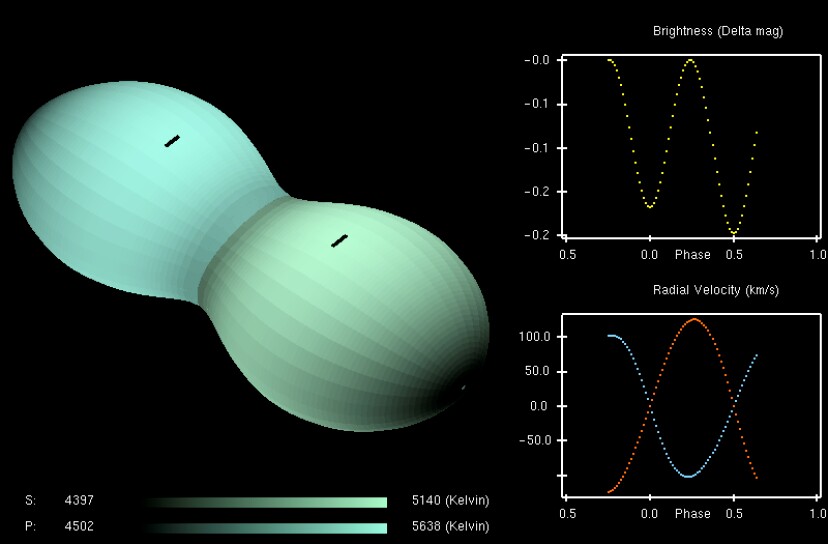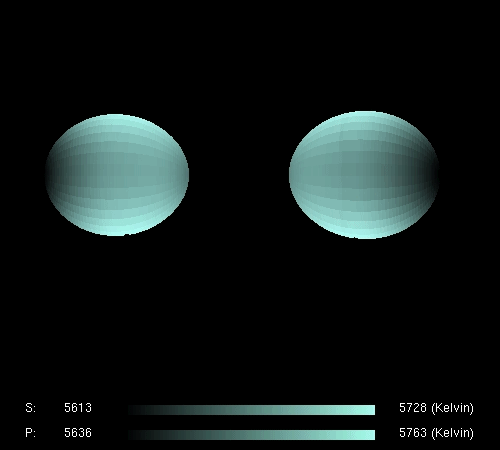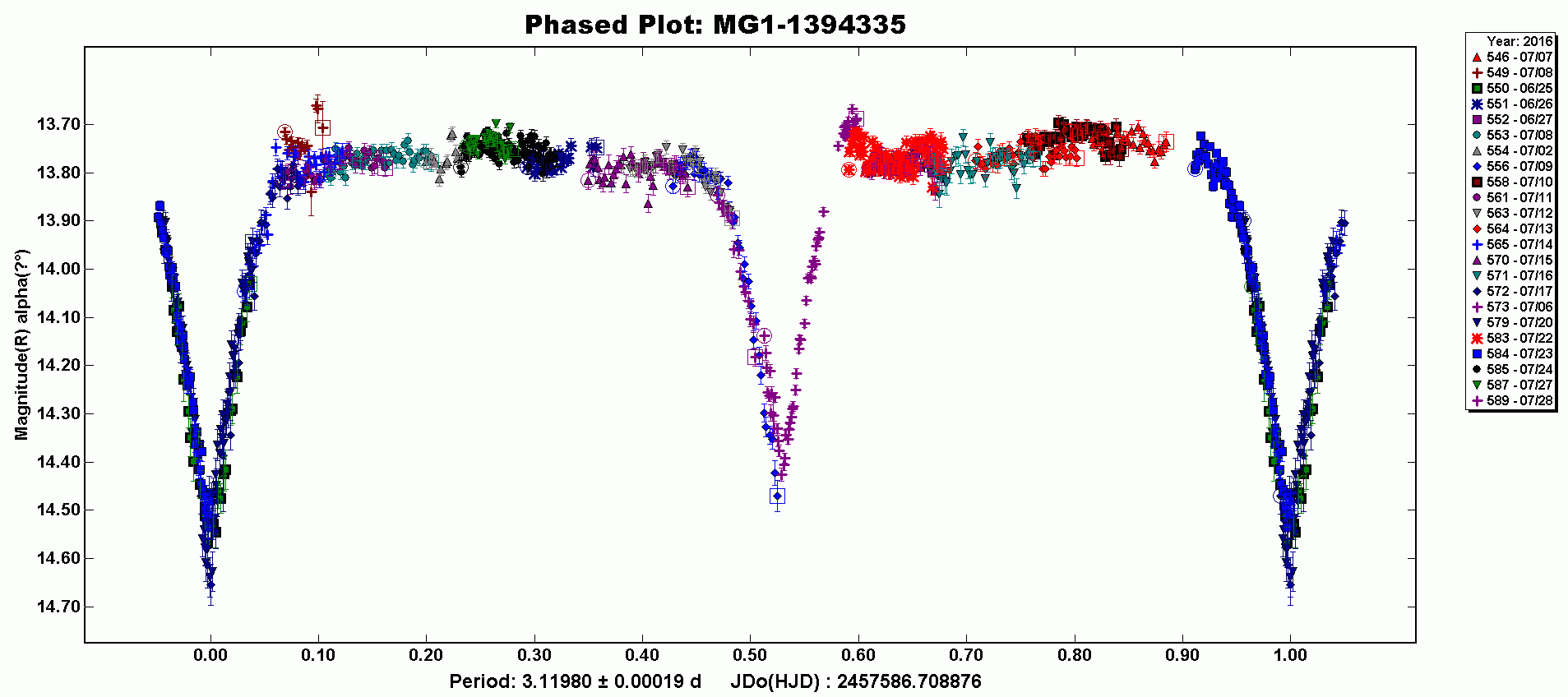
| " " |
|
| Facilities Research Publications Patents Astronomy Software SSC Observatories Contact Us | |
MOTESS-GNAT Candidate Variable Stars Follow-up Model of Merging Binary Star MG1-520700 Because these stars were sampled on a roughly 24 cadence, stars with periods below several days were not measured often enough to produce accurate period measurements. Since 2015, SSC Observatores has undertaken a program that seeks to measure, model and verify or rule out under sampled candidate stars from the catalog. Because the cadence of MOTESS is one synodic day. Nyquist's sampling theory states that, for sinusoidal varying sources, the minimum sampling rate required to determine the period of the source is two times the signal frequency. For non-sinusoidal sources, the flux waveform can be considered as a sum of the fundamental frequency plus the weight sum of its phase shifted harmonic overtones. For complex waveforms or stars having multiple physical mechanisms modulating stellar brightness, the sampling rate must be many the frequency of the fundemental period to reconstruct the input signal.  MG1-1395335 Eclipsing Binary Star - Orbital Period 3.1198 Hours This implies is that no period less than two days is likely to be correct in the survey. Furthermore, impulse like transients or saw tooth like pulsating variables, and widely spaced eclipsing multiple star systesm are likely to be incorrect even with ascribed periods of 16 or more days.  Light curve of MG1-1395335 taken through an R band filter Target stars have been selected to satisfy the requirement that they are visible at air mass two or less from horizon to horizon for at least a week. Additionally, must they have MOTESS-GNAT ascribed periods of less than 90 hours, or have exhibited large single transient events. Finally, their magnitude must be less that about 16.5 Magnitude so that they have good signal to noise ratios through standard V and R filters. Stars are typically observed with the CS3-7 0.25m telescope. Additional observations are sometimes With the CS3-7 0.4m telescope, and the LCRO 0.3m telescope. Fields that contained multiple candidates satisfying these criteria are given preferential treatment during the selection process. To date we have observed over 90 candidate variable stars and validated 57 new variable stars, measured their periods, classified their type and have, for many, modeled the star or stellar system. |
|
|
|||